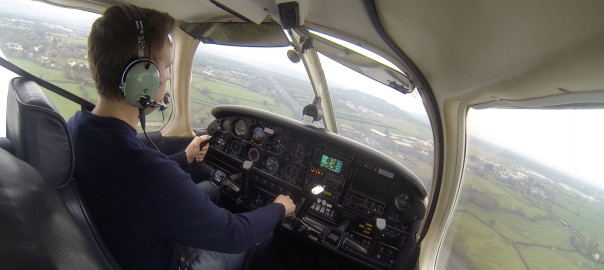The Aeros PPL syllabus requires around 3 and a half hours of solo flight before finishing the solo consolidation and moving on to advanced turning, PFL and navigation. I made a mistake whilst adding up my time last lesson and had overestimated how much time I had flown solo – it was 2 hours 55. So today would be another (hopefully final) lesson of circuit consolidation to build up my solo hours.
Out to the apron, I did the A-check and prepared to get going. The ATIS reported 6knot wind from 160, and runway 18 was active with left hand circuits. I was excited at the thought of finally getting to do some left-hand circuits. However my excitement didn’t last long! After completing the start-up checks and getting ready for taxi, the time was now 11.25 so I had to re-check ATIS (it updates at 25 and 55 minutes past each our). The active runway had changed to 22, with right-hand circuits, so I’d be flying the same pattern as last lesson. Nevermind!
I did three circuits with my instructor: one normal, one flapless, and a glide approach. Everything seemed to go well – I made the glide approach ok although it was fairly close. I put the first stage of flap in a little earlier than ideal, but it worked out ok. The idea with a glide approach is that you should be sure that you can reach two thirds up the runway before using flap. Then, with one stage of flap, you should be able to make it to one third up the runway. Only when you are absolutely sure you will make it to the threshold should you use the final stage of flap. Without any power, you don’t have the option of regaining height so you must be super careful to keep as much altitude as possible (by maintaining best glide speed).
We landed after the glide approach, and my instructor jumped out, leaving me to go solo.
I flew five circuits. The first couple were quiet (I had one ahead) but then things became progressively busier – at one point I was number 5. A couple of left orbits were necessary for spacing (one of which I requested when the Technam in front was a little close for comfort) which sorted everything out. Although the reported ground wind was only 6 knots, it seemed to be much stronger at circuit height. On the upwind leg (after take off) the nose attitude needed to be lower than normal to attain the standard climb speed of 79. Equally, on downwind the airspeed went up to 125 at one point (it’s normally 100) which gives you even less time than normal to do all the downwind checks and radio call.
After the five circuits, I called it a day and taxied back to the Aeros apron. I have now completed 3 hours and 40 minutes of solo flight time, enough to move on to the next stage of training. Wahey!
Here’s the GPS tracks:
Here’s a clip of one of my circuits:
